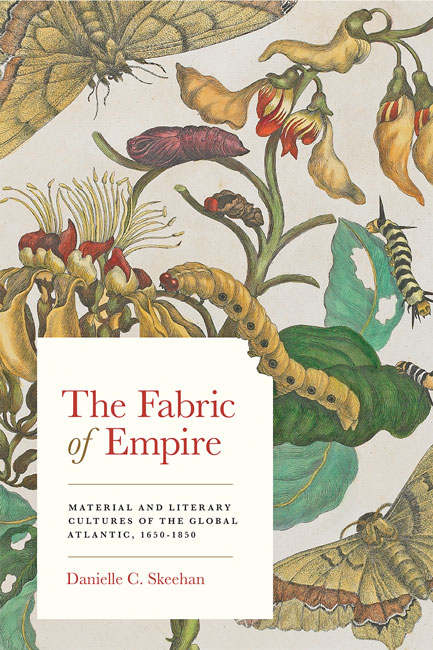
D. C. Skeehan, The Fabric of Empire. Material and Literary Cultures of the Global Atlantic, 1650-1850
Danielle C. Skeehan
The Fabric of Empire. Material and Literary Cultures of the Global Atlantic, 1650-1850
John Hopkins
ISBN: 9781421439686
200 p.
54,99 $
PRÉSENTATION
"Textiles are the books that the colony was not able to burn."—Asociación Femenina para el Desarrollo de Sacatepéquez (AFEDES)
A history of the book in the Americas, across deep time, would reveal the origins of a literary tradition woven rather than written. It is in what Danielle Skeehan calls material texts that a people's history and culture is preserved, in their embroidery, their needlework, and their woven cloth. In defining textiles as a form of cultural writing, The Fabric of Empire challenges long-held ideas about authorship, textuality, and the making of books.
It is impossible to separate text from textiles in the early modern Atlantic: novels, newspapers, broadsides, and pamphlets were printed on paper made from household rags. Yet the untethering of text from textile served a colonial agenda to define authorship as reflected in ink and paper and the pen as an instrument wielded by learned men and women. Skeehan explains that the colonial definition of the book, and what constituted writing and authorship, left colonial regimes blind to nonalphabetic forms of media that preserved cultural knowledge, history, and lived experience. This book shifts how we look at cultural objects such as books and fabric and provides a material and literary history of resistance among the globally dispossessed.
Each chapter examines the manufacture and global circulation of a particular type of cloth alongside the complex print networks that ensured the circulation of these textiles, promoted their production, petitioned for or served to curtail the rights of textile workers, facilitated the exchange of textiles for human lives, and were, in turn, printed and written on surfaces manufactured from broken-down linen and cotton fibers. Bringing together methods and materials traditionally belonging to literary studies, book history, and material culture studies, The Fabric of Empire provides a new model for thinking about the different media, languages, literacies, and textualities in the early Atlantic world.
Danielle C. Skeehan is an assistant professor of English and comparative American studies at Oberlin College.
SOMMAIRE
Introduction. The Material (Con)Texts of Global Modernity
Part 1. The Empire's New Clothes: British Publics and Imperial Politics, 1650–1720
Chapter 1. Patterns for Plantation: New World Silk and the Natural History of Settler
Colonialism
Chapter 2. Indo-Atlantic Modernity: The Early Global Cotton Trade and the Emergence of Racial Capitalism
Part 2. Revolutionary Threads: New World Publics and Insurgent Economies, 1750–1800
Chapter 3. The Republic of Homespun: Material Economies of the American
Revolution
Chapter 4. Materializing the Black Atlantic: African Captives, Caribbean Slaves,
and Creole Fashioning
Part 3. The Fabric of American Empire: Imagined Communities and New Geographies, 1600–1865
Chapter 5. Oriental America: Silk Geographies in the Era of the Early Republic
Chapter 6. Empires in Rags: Hemispheric American Material and Literary Texts
Conclusion. Weaving Revolution in the Global South